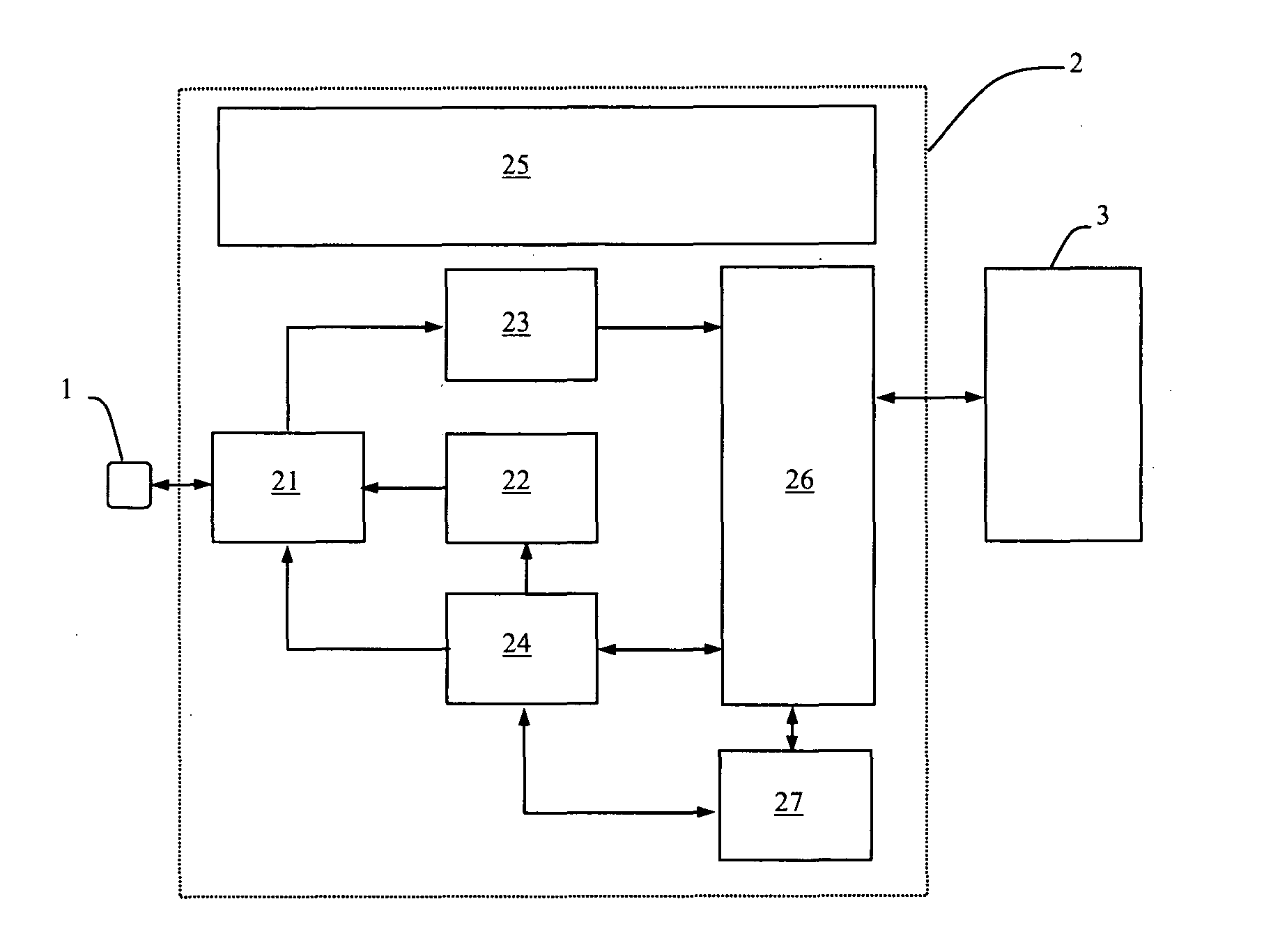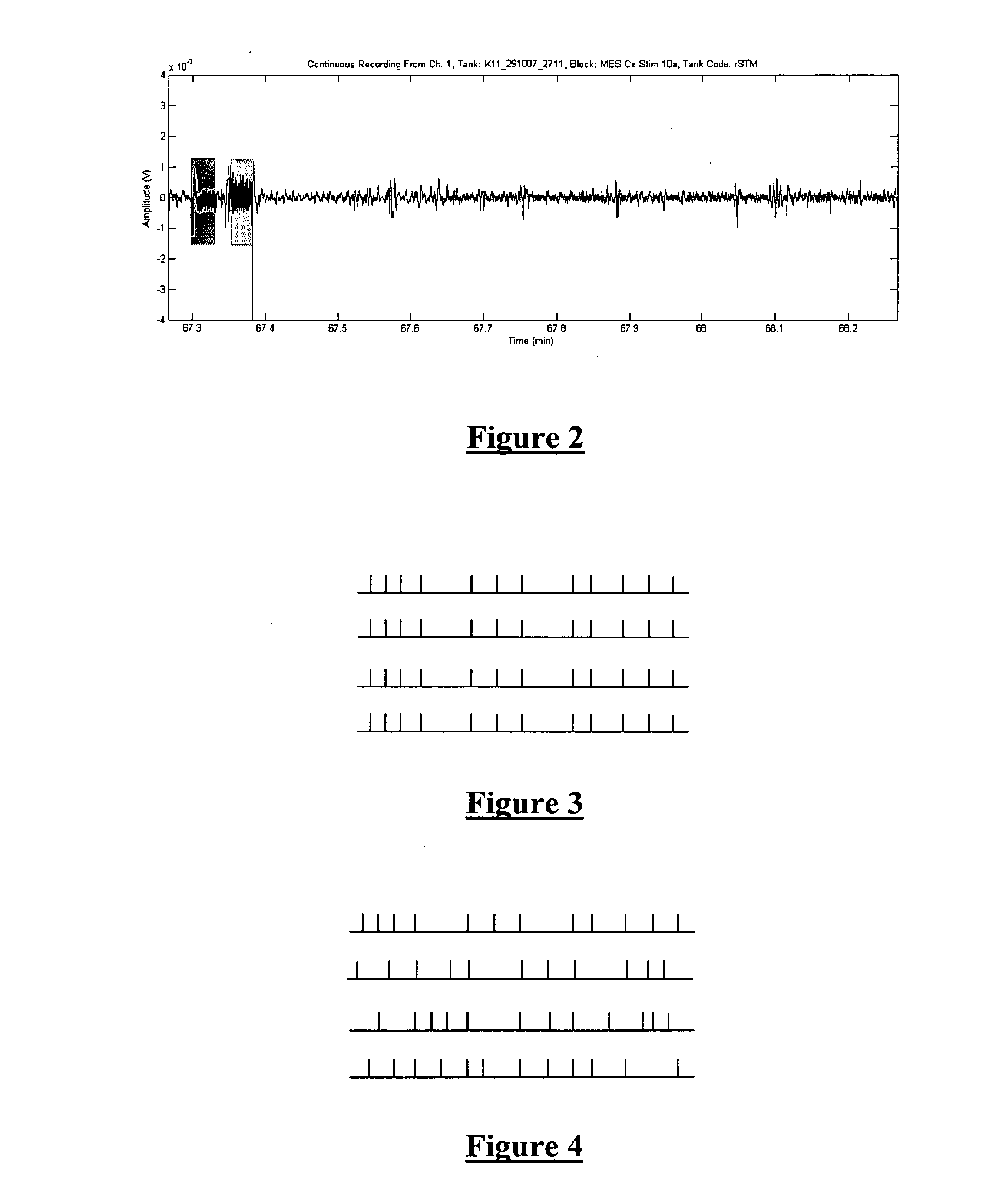Method of counteracting seizures
a technology of epilepsy and seizures, applied in the field of seizures, can solve the problems of small proportion of drug-refractory epilepsy patients that can be treated surgically, and achieve the effects of high duty cycle, long electrical pulse width, and high electrical pulse ra
- Summary
- Abstract
- Description
- Claims
- Application Information
AI Technical Summary
Benefits of technology
Problems solved by technology
Method used
Image
Examples
example 1
Statistic Significance of Seizure Abatement
[0086]The results here focus on one measured parameter known as epileptiform afterdischarge (EAD) duration. Essentially this is the duration, in seconds, of the abnormal electrical signal arising from the brain that is measured through any of the eight recording electrodes. The varying analyses revolve around differences that exist in the distributions of these durations in the stimulated versus non-stimulated cases. Of particular interest here are the observations that begin on the 27th day post surgery and carry through to the 70th post-surgical day. Throughout the period of time included in this analysis, a range of potentially therapeutic combinations were administered in a pseudo-randomised fashion in order to avoid the confounding effects of repeated sequential delivery of the same experimental variables.
[0087]By reducing the raw data set to cumulative mean EAD durations, standard deviations and 95% confidence intervals, it was possib...
example 2
Statistical Significance of Seizure Abatement
[0092]The Mann-Whitney Rank Sum Test was again used to evaluate any statistical significance between the EAD populations of non-stimulated versus stimulated trials. For both 500 Hz and 1000 Hz stimulation significance (P<0.001) was shown.
Example 3
Experimental Methods and Materials; Results and Stimulation Strategy
[0093]The testing approach taken with respect to Example 2 was repeated, but, with reference to the plots of FIGS. 10 to 13, testing was performed by delivery of both aperiodic / asynchronous (Ap / As) and periodic / synchronous (P / S) stimuli, at both 125 Hz and 500 Hz, and with pulse width of 1000 μs, the stimulation current being maintained at 300 μA. For the purpose of comparison, with reference to the plot of FIG. 9, testing was also performed upon delivery of periodic / synchronous stimuli, at 125 Hz, with a pulse width of 300 μs, and with the stimulation current maintained at 300 μA.
[0094]For the 500 Hz stimulated trials, where the...
example 3
Statistical Significance of Seizure Abatement
[0097]The Mann-Whitney Rank Sum Test was again used to evaluate any statistical significance between the EAD populations of non-stimulated versus stimulated trials. For all but the 125 Hz, 300 μs, P / S, 300 μA stimulation, significance (P<0.001) was shown.
PUM
 Login to View More
Login to View More Abstract
Description
Claims
Application Information
 Login to View More
Login to View More - R&D
- Intellectual Property
- Life Sciences
- Materials
- Tech Scout
- Unparalleled Data Quality
- Higher Quality Content
- 60% Fewer Hallucinations
Browse by: Latest US Patents, China's latest patents, Technical Efficacy Thesaurus, Application Domain, Technology Topic, Popular Technical Reports.
© 2025 PatSnap. All rights reserved.Legal|Privacy policy|Modern Slavery Act Transparency Statement|Sitemap|About US| Contact US: help@patsnap.com



